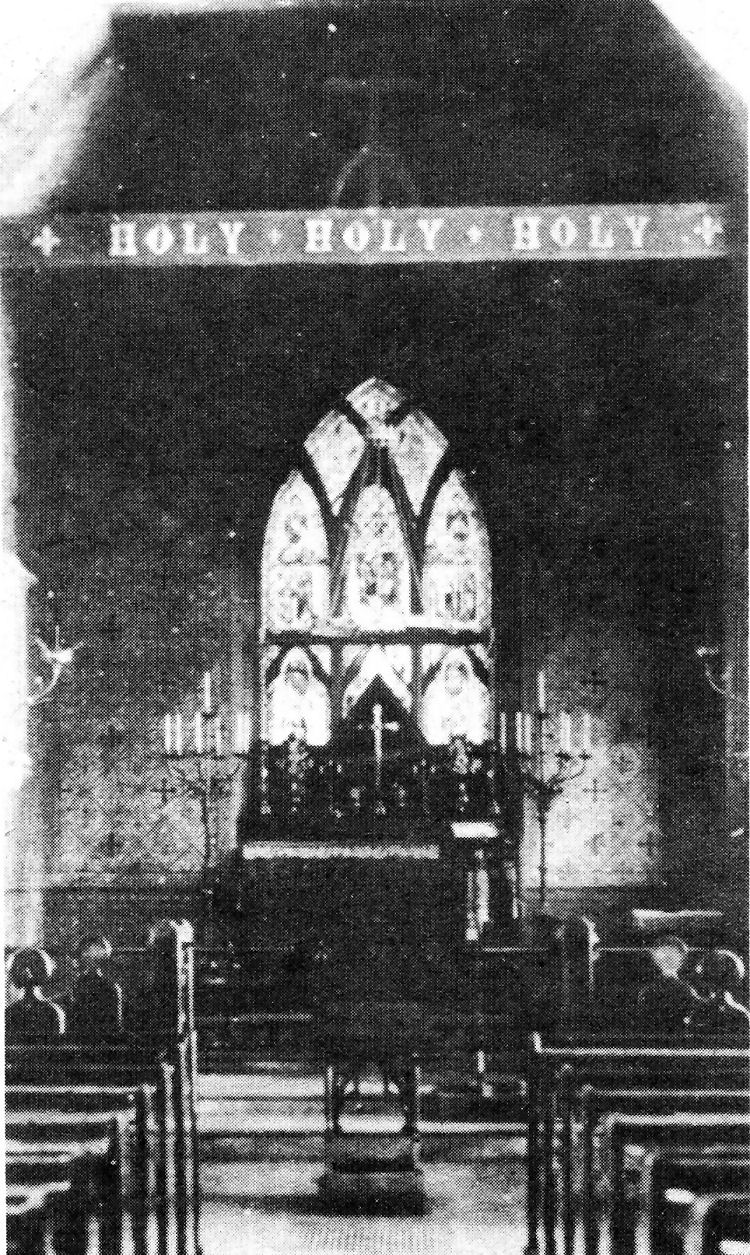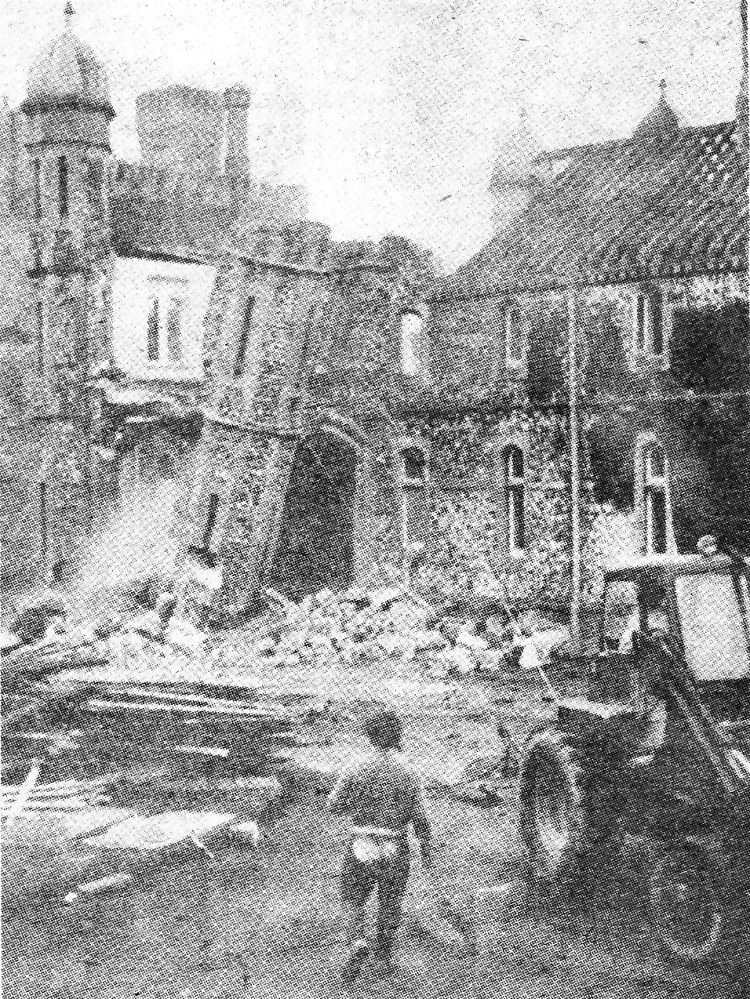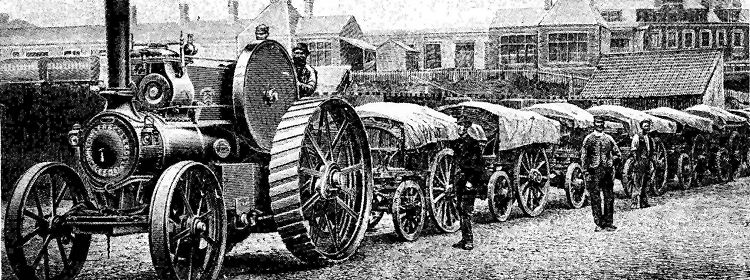Page Updated:- Sunday, 07 March, 2021. |
|||||
 Published in the South Kent Gazette, 27 May, 1981. A PERAMBULATION OF THE TOWN, PORT AND FORTRESS. PART 185.
DODD’S LANE Just below the Gate Inn, on the north side, Is Dodd’s Lane, and at its entrance used to be Dodd’s House. John Dodd was a brickmaker, and he built Dodd’s House and twelve cottages in Dodd’s Lane about the year 1808. He also owned six acres of land there. In June 1841, when John Dodd was about 70 years of age, he invited some friends to dine with him, on a Dover election day, and, amongst others, was a master mariner named George Hudson, who made himself notorious about that time by claiming a lot of property in Dover, and employing men to take the roof off one house to assert his ownership. During the dinner, Mr Dodd, who seems to have been a very simple old man, offered to show the deeds of his property to Mr Hudson, who took them away to read, promising to return them the next day. He never did return them, and at the Dover Quarter Sessions, in July 1842, George Hudson was indicted for unlawfully retaining the deeds.
DEFIANT JURY Before the trial John Dodd had died, and his deposition, owing to supposed informality, was ruled by the Recorder to be inadmissible as evidence, and he directed the jury that they must return a verdict of “not guilty.“ The jury, however, retired, and, in defiance of the Recorder, declared that they would do justice irrespective of law, and found the prisoner guilty. The Recorder respited the prisoner in custody till the next Sessions, and, meanwhile, the Secretary of State being advised that John Dodd’s evidence might be accepted, Hudson was, at the next Sessions, sentenced to seven years imprisonment, but he said he would suffer a thousand deaths before he would give up the deeds. What eventually became of the deeds is not recorded. Dodd’s Lane leads to a road which is a continuation of Barton Road, and was the original London Road before the present London Road was formed by the Turnpike Commissioners. Off this road, opposite the paper mills, were built a considerable number of houses, on an estate laid out by Major Lawes, including Glenfleld Road and Pretoria Terrace, containing altogether about 120 houses.
ABOVE THE GATE Above the Gate is Pioneer Road, on the north side, laid out by Mr G. Solly, in which there are a good many houses; and on the other side, above the railway bridge, are residences extending to the top of Lower Road.
OLD PARK On the northern elevation above Crabble Hill until comparatively recent years stood Old Park, a substantial old time residence, occupying extensive grounds, and commanding fine views of land and sea. It is stated that the house was one of the possessions of the Knights Templars, but lit was. largely rebuilt and improved by Major R. B. Lawes, JP, about the year 1870. Major Lawes lived there until his death in 1907. The history of Old Park is somewhat obscure — in fact, as far as we can trace, there is no distinct history of it at all beyond the last century and a half; but there is reason to suppose that Old Park was a part of the Manor of Archer’s Court, and that when that Manor was divided in the reign of Edward IV, the history and traditions remained attached to Archer’s Court, while the other part, called Little Archer’s Court, has long been known as Old Park. That portion was purchased by Sir George Browne, of Beechworth Castle, who was Sheriff in the 21st year of Edward IV, but who, in the reign of Richard in, was attainted, but restored in the reign of Henry VII. His grandson Matthew, in the reign of Mary, appears to have been the owner of Old Park. It was described as land in the parish of River called Coppland, a name which well agrees with the physical features of Old Park. The estate subsequently passed to the Honywoods. Colonel Henry Honywood, of that family, the register of Canterbury Cathedral states, “was a Colonel some time under that grand rebel Oliver Cromwell.“ Two hundred years ago Old Park was the seat of William Osborn, MD. The next owner appears to have been Mr John Every, JP, who held it until 1848. In 1852 Old Park House was the residence of Mr Wilkinson, whose eldest son came of age in September of that year, giving rise to a week’s festivities on a very extensive scale, including the improvisation of a “Theatre Royal“ there, attended by most of the fashionable visitors of Dover. Major Lawes’ family frequently granted use of the pleasant grounds for Dover Sunday School festivals.

A rare view, above, of the interior of the old Charlton Church, off Beaconsfield Avenue, which was made redundant by the building of a larger church set further back from the river. The little church was demolished over 85 years ago.

Above is the sad scene as demolition men set to work on the destruction of the once striking building known as Old Park Mansion. The spacious building was latterly the home of the Murray Lawes family and then, for a time, became the headquarters of the Junior Leaders Regiment of the Royal Engineers whose barracks were established in the grounds of the mansion. The building was taken over the Army a year before the last war broke out and it was turned into an officers’ mess. Lt-Colonel R. L. Murray Lawes believed that part of the mansion dated from 1863. Previously the site had been occupied by a farmhouse and there were chalk caves in the farmyard. Tradition had it that secret passages led from one of these caves to Dover Castle — a long way off — and had been used by escaping prisoners. The view from the terrace of the mansion was one of the finest on the Kent coast.

Pictured above is a road train hauled by one of the traction engines of James Robson and Sons who ran steam threshing machines and traction engines from their depot on Crabble Hill. The engraving dates from the 1890s.
|
|||||
|
If anyone should have any a better picture than any on this page, or think I should add one they have, please email me at the following address:-
|
|||||
| LAST PAGE |
|
MENU PAGE |
|
NEXT PAGE | |